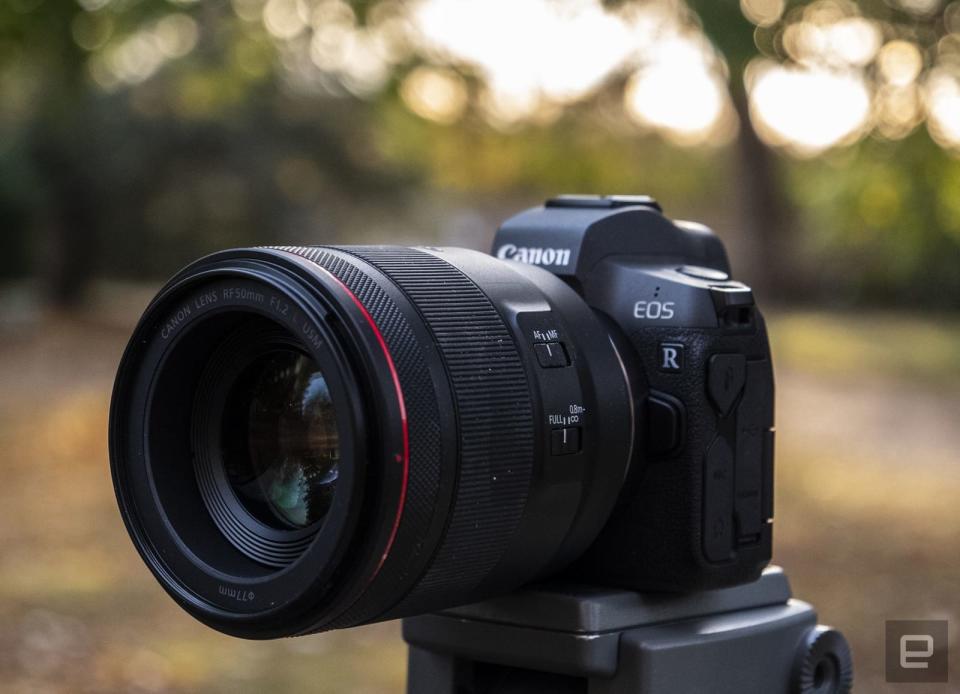Canon EOS R review: Brilliant mount, but flawed 4K video
The system has huge potential, now Canon needs a better camera for it.
Canon has a lot riding on its first-ever full-frame mirrorless camera, the EOS R. Not only is it an important camera on its own, but it's the ambassador for Canon's all-new RF mount system. It isn't just competing against Sony's heavily entrenched and popular A7 series, like it was two months ago. Now, archrival Nikon has its own full-frame mirrorless cameras, the Z6 and Z7, also with an all-new system called Z-Mount. When I first saw the EOS R in Maui, I fell in love with the big mount and the potential it represented for sharper, faster and more compact lenses. But living with a camera is different from having a crush on one. After using it for nearly two months, I feel it has a lot going for it, like the world-beating Dual Pixel autofocus system, great color science, excellent lenses and a solid build. Given the price, however, it has incredibly steep competition from Nikon, Fujifilm and especially Sony. But if my issues with video and handling are anything to go by, you might want to think again before laying down $2,300 for the EOS R. One thing that Canon definitely nailed is the body design. Compared with Sony's A7 III, and even the Nikon Z7, the EOS R handles better. Thanks to the large grip, it feels like you're never going to drop the camera, even in slippery and wet conditions. And unlike with the A7 III, there's plenty of space for your fingers, with or without gloves. It's a bit heavier than its mirrorless full-frame rival, but it's weatherproof and feels almost bulletproof. At 58mm, the RF mount is huge, yet it has a very short 20mm flange distance. Those design factors allow Canon to build better lenses with less glass. Take the new 50mm f/1.2 lens, for example -- it's much sharper than the DSLR equivalent, because it's way closer to the sensor. Many of the images I took with it are incredibly punchy and contrasty, even with the aperture wide open. It's possible to build an EF DSLR lens with the same optical quality, but it would be much bigger and heavier. Canon is also set to ship the 28–70mm lens with a very fast f/2.0 aperture rarely seen in zooms, and that model is also crazy sharp. That's why I'm so excited about the potential of the mount and EOS R system: Buyers already have a great choice of popular-focal-length lenses, and more are coming down the pike -- like the upcoming 35mm f/1.8 macro -- that take better advantage of the smaller mirrorless body. The EOS R launched with four RF lenses, but that doesn't mean you're stuck with just those. If you have Canon EF full-frame or APS-C EF-S lenses already, three new adapters let you put them on the EOS R with no loss in quality. The $100 adapter gives you full autofocus and exposure control, while the $200 version gives you the same control ring found on the native RF lenses. The $300 model adds a polarizing filter and, finally, the $400 model adds a neutral-density filter so that you can shoot in sunlight with a wider aperture -- ideal for videographers. Your autofocus accuracy might drop a bit using the adapters instead of a native lens, but otherwise, you get the same performance as you would on a DSLR. Because of the electronic viewfinder and rear display, a mirrorless camera is never going to have battery life as good as an optical-viewfinder-equipped DSLR. Nevertheless, the EOS can go for a decently long time on a charge. For regular shooting, you can expect to get upwards of 600 to 700 shots, and if that's not enough, a battery grip is available. It takes standard Canon LP-E6N batteries, and many folks (like me) have plenty of those lying around already. On the connection side, you've got microphone and headphone inputs, along with USB-C and micro-HDMI, all of which you'd expect on a premium full-frame camera. You can run it and charge the batteries on USB-C, but if you don't use Canon's own charger, be sure that any third-party model has enough power to do the job. Unfortunately, there's only one SD UHS II card slot. It hasn't affected me so far, but Tony Northrup, another attendee at the Canon event, had a card failure on his muddy waterfall hike. He lost several key video clips, which was bad enough. It could have been catastrophic, though, had it been wedding or baby shots, as he mentioned. As such, the lack of a dual card solution will simply be a nonstarter for many professionals. Many rival cameras, like Fujiflm's X-T3 and the Panasonic GH5, do have dual SD UHS-II card slots. The Canon EOS R also has no in-body stabilization. That makes it a serious challenge to use with its two best lenses, the 50mm f/1.2 and the 28–70mm f/2.0, as neither of those is stabilized. And again, the EOS R's two cheaper rivals, the A7 III and Z6, both have 5-axis stabilization. One place the EOS R beats the Sony A7 III is with its 3.69-million-dot OLED EVF. It's brighter, packs more resolution and has a faster refresh rate. To save money, apparently, Sony endowed its A7 III with a 2.36-million-dot OLED EVF -- a funny decision, considering that it probably manufactures the model Canon uses. The EOS R EVF is so good that DSLR shooters won't miss their optical viewfinders (much). Finally, the EOS R has a fully articulating, flip-out rear touch display that's ideal for vloggers. That beats a lot of recent models, including the Nikon Z6/Z7, Sony A7 III and Fujifilmi X-T3, all of which have tilting but not flip-out displays. The video record button is also on top, rather than around back, so self-shooters won't have to fumble. When I first saw the EOS R, I felt Canon had made a smart move by switching up its controls. Now I'm not so sure. I thought the multifunction bar was weird, but that I'd get used to it. After a couple of weeks of trying, however, I found it's simply too easy to activate by accident. You can enable the half-second touch activation for safety, but that's bound to slow you down. It's just too fiddly to use, and I ended up turning it off. Then there's the touchscreen autofocus point selection system. The EOS R has no joystick, so this is what you're supposed to use to select the autofocus region. Unfortunately, it's simply too unreliable. It takes multiple swipes to move it from side to side, and it's too easy to bump it by accident. Again, I've turned off that function and am using the menu control buttons instead. I don't particularly care for the new control dial positions either, both of which are now on top, but I've gotten used to them. I'd also rather have the power switch on the right side, near the shutter button, where it's easier to access. However, I do like the control ring on the new lenses and use it to control the ISO setting, giving me easy access to all the major exposure controls. I like the menus also. You can switch from group to group using the "info" button, then move between controls via the D-pad-like controller. The groups are well organized, and it's relatively easy to find key comments. By contrast, Nikon's system is a major pain to use, forcing you to scroll endlessly to find key commands. I like Canon's system better than that of any other camera maker except Blackmagic Design. Autofocus is either great or average, depending on what you're doing. For snapping photos, it's not as fast as Sony's hybrid system on the cheaper A7 III. The face and eye tracking also can't hold a candle to Sony's system. And it can't compare to DSLRs like Nikon's D850, or even Canon's own models. AF affects shooting speeds, too. On paper, the EOS R isn't much slower than the Sony A7 III, with a max of 8fps, as compared with 10fps for the A7 III. However, with continuous autofocus enabled -- a must for sports or wildlife shooting -- speeds drop down to 4.5fps, while the A7 III can shoot at 8fps. So the EOS definitely isn't for sports photography. In the real world, when snapping in continuous AF mode, I found that the EOS R would nail about three-quarters of my shots in bright light, and fewer in dimmer conditions. Again, that's a result that doesn't hold up to its main rival, the A7 III. In my tests, I found the EOS R lacking against Nikon's Z7, too. Even in single-shot mode, the EOS R AF is hit-and-miss. When I used it with the 50mm f/1.2 lens, it would occasionally struggle with focus if I tried to shoot quickly, particularly in low light. I realize that lens isn't made for sports photography, but it held me back with street and candid photography, where you might just have a split second to grab the ideal shot. (By contrast, this lens does have incredible optics; more on that shortly.) Video autofocus performance is a more uplifting story. The Dual Pixel system is renowned for nailing focus on faces and objects, time after time, in most circumstances. On the EOS R, it works better than ever. For instance, when I was shooting people in low light or while hiking, it absolutely nailed focus nearly every time. It truly is an uncanny system, and far superior to any other I've tried. (Looking at you, GH5s and Nikon Z7.) If you're using vintage lenses or just want to focus manually, Canon makes it a bit easier than before with the EOS R. It now offers focus peaking, delineating the parts of the image in focus with a colored line. You can use it at the same time with the "Dual Pixel Focus Guide" feature, which shows the focus position relative to the subject. Canon points out that it's "especially helpful when recording movies." When using it with an older Tamron lens, I found it worked well. Together with the flip-around screen, that should make it ideal for vlogging and action shooting, right? Welp, not so fast. My biggest problem with this camera is the 1.8x crop factor when shooting 4K video. For that, the EOS R has a narrower field of view than APS-C cameras and just a shade better than Micro Four Thirds. That negates many of the full-frame sensor's advantages, like the improved low-light performance and the narrower depth of field to make your subjects stand out. On top of that, you can shoot at just 30fps max in 4K, and only 60fps at 1080p in cropped mode. If you want 120fps, you've got to go all the way down to 720p. And for some reason, you can't shoot 60 fps 1080p video with an APS-C lens attached, even though the image circle is theoretically big enough. There's no nice way to put it, but rolling shutter (or jello effect) is pretty bad on the EOS R. That's kind of surprising, considering that the reduced sensor area should require less time to read. Even if you shoot in 1080p using the full sensor, however, rolling shutter is still pretty bad. The problem is exacerbated by the lack of in-body stabilization. When I tried to shoot handheld video with the 50mm f/1.2 lens, the vibrations generated a lot of wobbly video, which is simply impossible to fix in post. You can spend $800 less on Fujifilm's X-T3 and effectively get a bigger sensor, along with 60fps 4K, 120fps at 1080p and less rolling shutter. If you want full-frame 4K, both Sony's A7 III and the Nikon Z6 do a full-sensor readout with no pixel binning. Why is the EOS R so crippled? There are theories that Canon aimed to limit the performance to protect its more expensive C-series video cameras. However, it seems more likely that it simply didn't have a 30-megapixel sensor and processor combo that could handle full-frame 4K video and 60fps full HD. Whatever the case, the EOS R video is flawed for both vlogging and regular videography. That's a real pity, considering the fully articulating screen and excellent lenses. If you don't mind the cropping and jello, video quality is sharp, and skin tones and colors look great, thanks to Canon's top-notch color science. And again, vloggers and shooters who rely on autofocus can expect very few out-of-focus shots with the great Dual Pixel system. Despite these flaws, I loved taking photos and even shooting video with the EOS R. It really feels great, and both the kit lens and the 50mm perform extremely well. For many shooting situations, like portrait, landscape and street photography, the autofocus system works fine. In regular light, you're going to get sharp images, and 30.1 megapixels is enough resolution to give you some cropping options. Canon's color science is top-notch, so colors and skin tones are pleasing and accurate. The real revelation for me was the quality of the lenses. With the new mount design, I expected them to be better, but I really took some beautiful photos with the EOS R, especially when using the stunningly sharp 50mm f/1.2 lens. So what I originally liked about the camera -- the new mount system -- has proved to be even better than I expected. That has me excited about new lenses and future cameras. In low-light situations, the EOS R's performance isn't on par with the Sony A7 III, though let's face it, we've been spoiled by that camera. It's still pretty decent, though, and better than any APS-C or Micro Four Thirds model. If you find a shot has too much noise, there's often enough resolution to shrink it down. As other have reported, I saw striping artifacts on low-light images in dark areas because of the phase-detect autofocus pixels. That's also a problem with Nikon's Z6/Z7, but it seems to affect only certain photos shot in low light at a high ISO setting. A cure would be to simply darken shadow areas until it disappears. Another problem in low light is the lack of in-body image stabilization. That lovely 50mm f/1.2 lens might have superb optics, but unless you have steadier hands than I do, you're not going to be able to take sharp photos below 1/60 of a second with no in-body stabilization. As such, many photos I took that otherwise might have been sharp ended up in the trash. Lightroom CC just got support for EOS R RAW files, and with 14 bits of data, you've got a lot of latitude to finesse them. I found I was able to edit images pretty drastically while still retaining detail in dark and light areas. Strong as it is in some areas, I can't help but see the EOS R as a lost opportunity for Canon. The company has a well-deserved reputation for pioneering large-sensor DSLR video, yet its first full-frame mirrorless camera falls down against rivals in that area. The $2,300 camera (body only) is also missing features it needs to compete in this price bracket, like in-body stabilization. All is far from lost for Canon, though. The EOS R is merely the first camera for a brand-new system that has the potential to be world-beating. I was beyond impressed by the new lenses, especially the $2,300 50mm f/1.2 prime. That's enabled by the physics of the mount, which lets Canon's designers create lenses that are sharp yet compact. After all, that's the single most important part of a camera system -- the rest is just electronics. After my first look at the EOS R, I chatted with a Canon engineer and expressed my concerns about 4K video and the lack of stabilization. He strongly suggested that subsequent EOS R models would address my concerns. In the meantime, should you get the EOS R or wait it out? It really depends on what you're doing. For landscape or portrait photography and hybrid video, I think it works. A lot of vloggers and other users said that they're switching to the EOS R, despite the problems, because they believe in the mount and love Canon's Dual Pixel autofocus system and color science. It's not great for sports or wildlife photography, however, and I think video specialists would be better off with a Sony A7 III, Fujifilm's X-T3 or Panasonic's GH5/GH5s. If you still want an EOS R, try to borrow one to see if it works for you. Otherwise, you might want to wait for the next model.
Body and handling
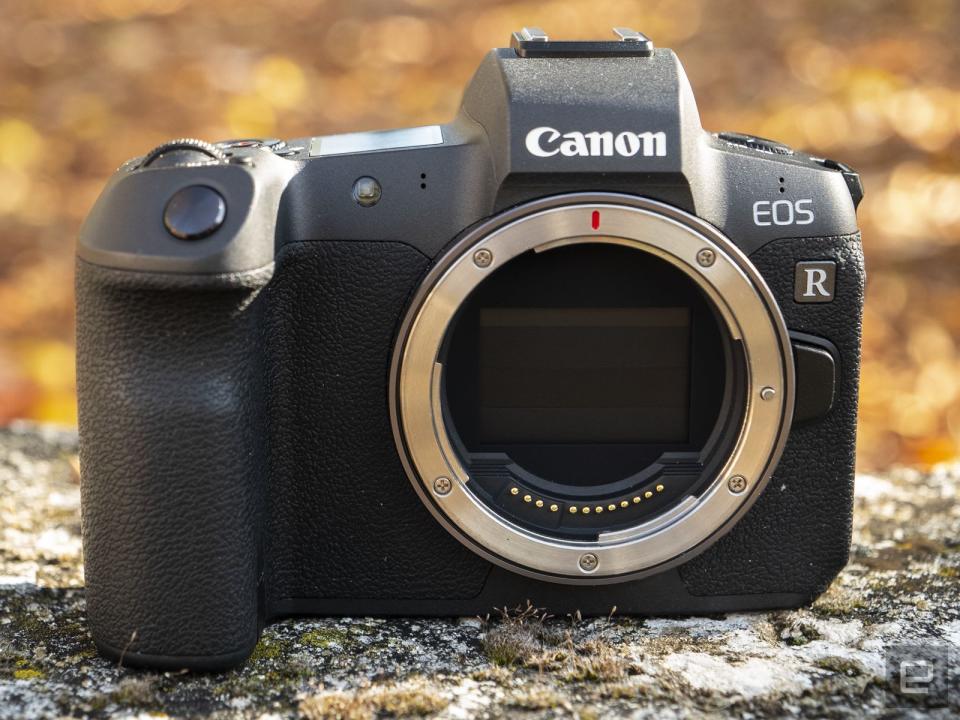
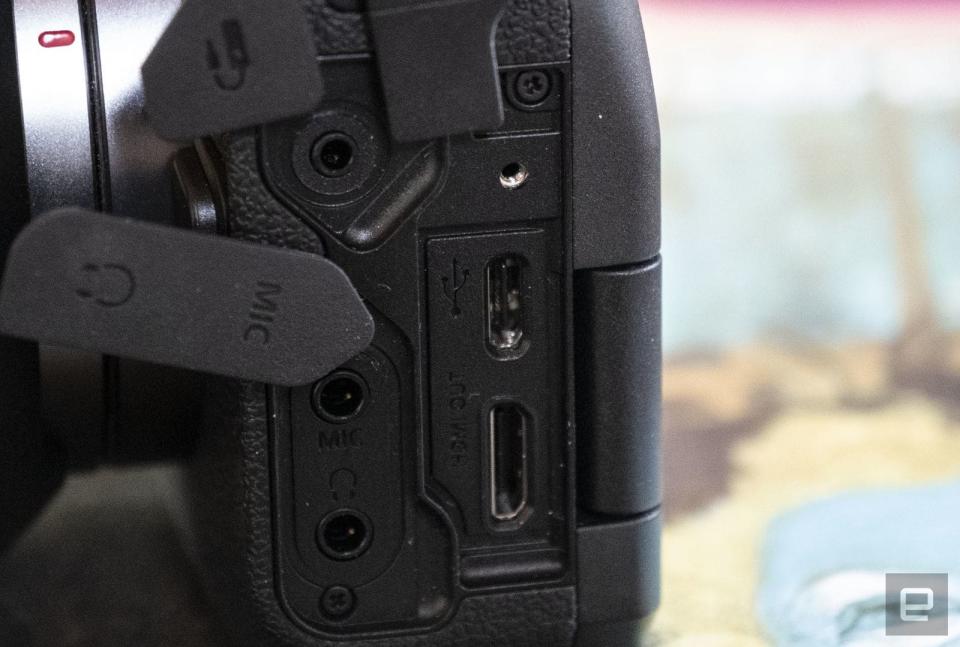
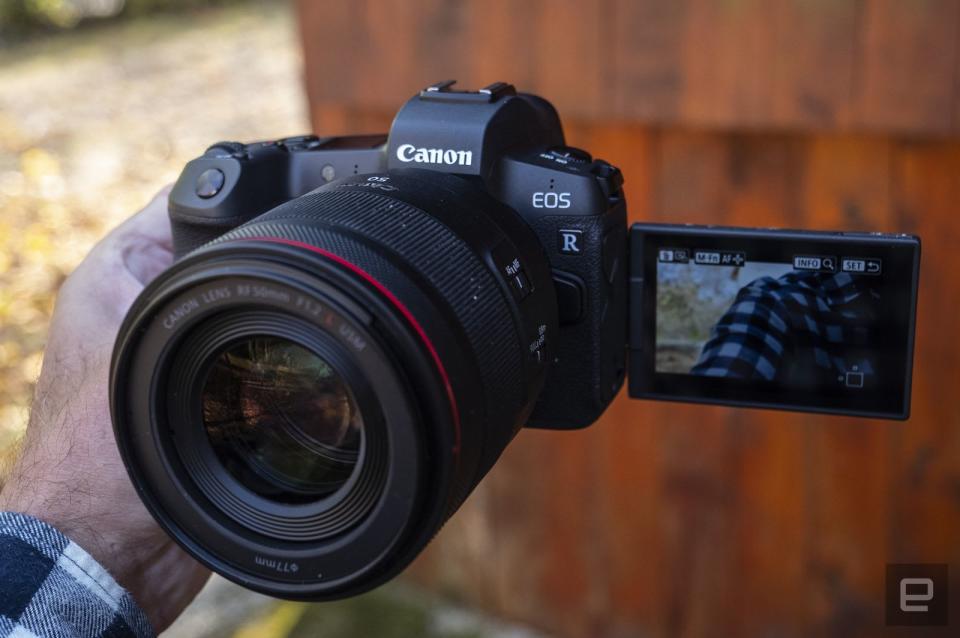
Performance
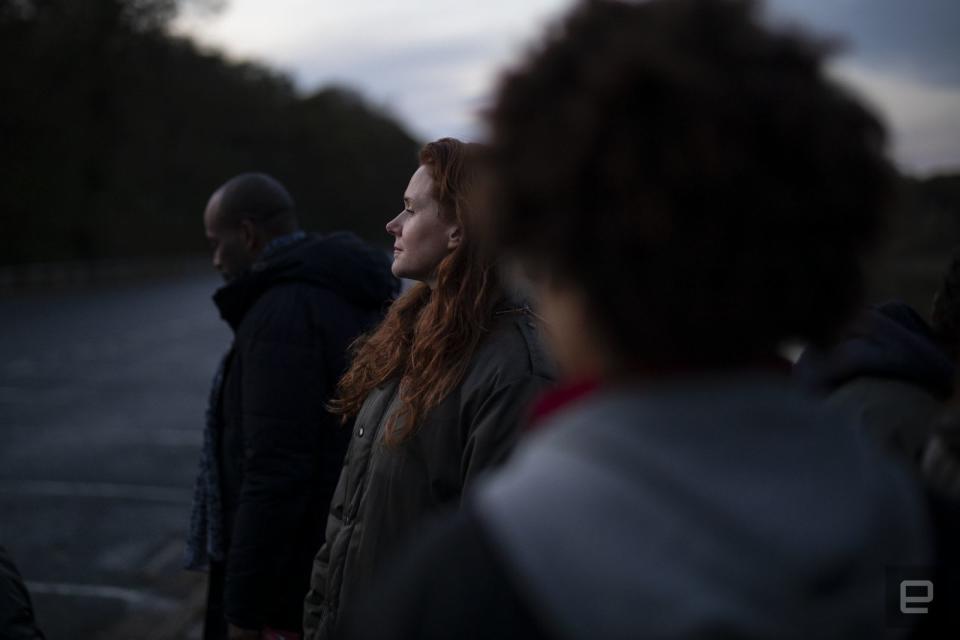
Video
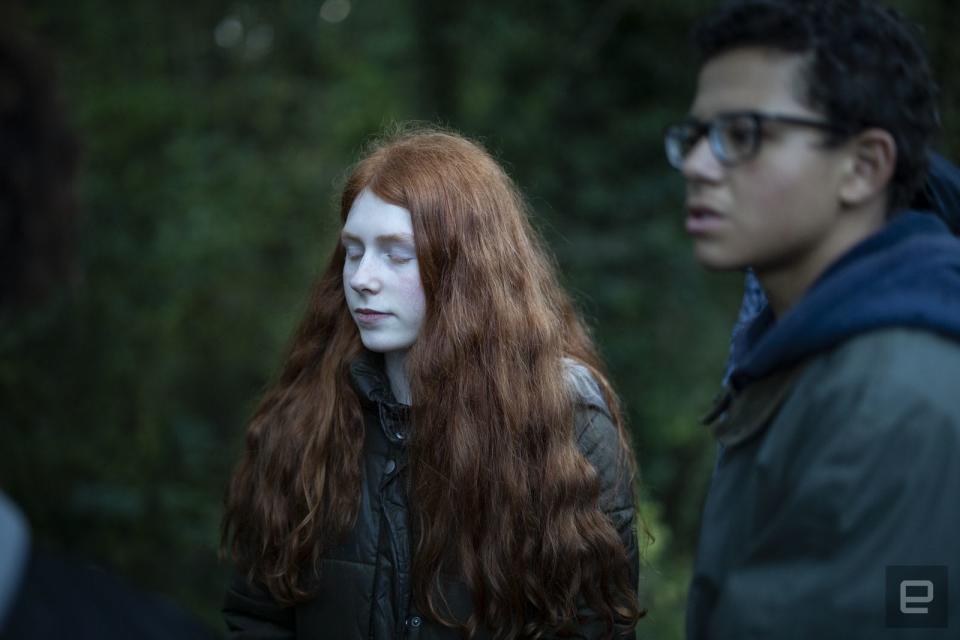
Image Quality
Wrap-up
